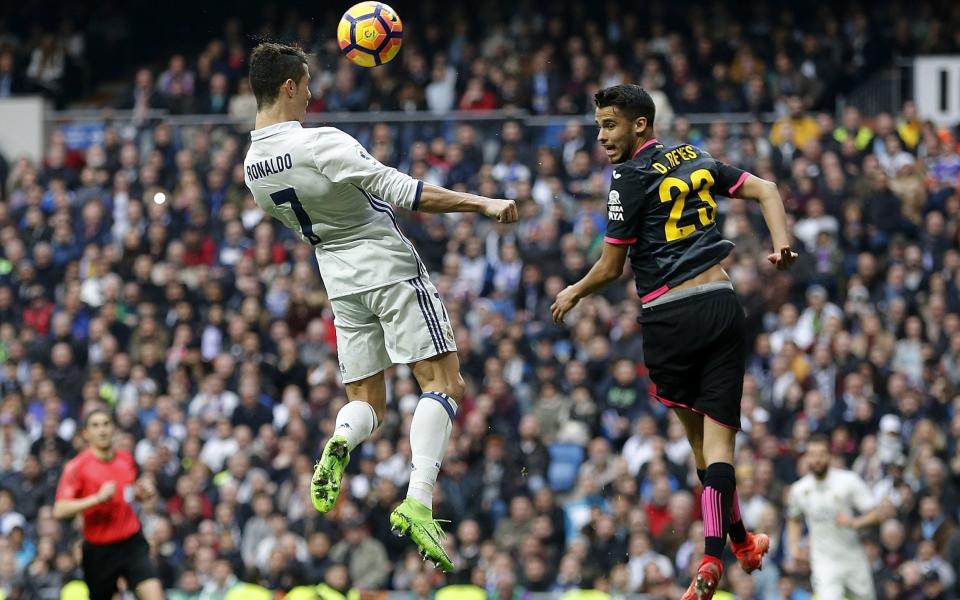The five reasons Cristiano Ronaldo is so good at heading a football

Cristiano Ronaldo added Atalanta to his list of Champions League victims on Wednesday night as his late winner continued his impressive record in the competition.
The Manchester United striker holds the records for most appearances and goals in Uefa's elite competition, two of a host of categories in which he leads the way.
Scoring against a 38th different opponent in the competition proper saw him reclaim one of those marks outright from Lionel Messi. And of course it had to be a header.
Ronaldo's ability to climb highest and generate extraordinary power is legendary, but why is he so good at it?
1. The movement
Watch his winner against Atalanta on Wednesday and Ronaldo is walking away from goal by the time Luke Shaw picks up the ball on the left and shapes to cross, as if to lull his opponents into a false sense of security and give the deliberately misleading impression he is not too interested. But Ronaldo never once takes his eye off the play and, by the time he turns suddenly and sharply, he has positioned himself directly between two Atalanta defenders and given himself the working advantage he wants.
2. The leap
During a series of biomechanic tests undertaken by the University of Chichester that formed the basis of a revealing, innovative documentary, Cristiano Ronaldo: Tested to the Limit, in 2011, it emerged that the Portuguese could jump 7cm higher than the average basketballer.
The tests established he could reach heights of 44cm from a standing start and 78cm when he has a run up. The strength of his thighs is pivotal to the success of his leap and a product, in part, of years of work performing single-legged jumping exercises with a medicine ball and repetitive squats using ankle weights to heighten resistance in training.

3. The timing
Ronaldo’s sequencing is almost flawless and bears similarities to a high jumper timing the exact peak of their jump with the point that they pass over the bar.
It does not matter if he is jumping from a standing start, as he did for the Atalanta goal or his header against United for Real Madrid in 2013, or meeting the ball on the run, as he perhaps most memorably showcased against Roma in 2008 when his bravery also came to the fore, his anticipation is fundamental to his art.

4. The power
Those hours of gruelling testing by the University of Chichester revealed that Ronaldo is able to generate 5G of G-force on take off, helped by a thigh circumference (at the time) of 62cm.
He recorded a force of five times his body weight when jumping. In addition to the strength of his thighs, it is that extraordinary core strength that enables the player to generate the power and stability he does and sometimes give the illusion that he is floating on air.
Ronaldo’s rock solid mid-section is the result of hours in the gym doing straight sit ups, left and right-sided sit ups, hip raises, planks, touch toes, dumbbell side bends and other workouts to toughen his core, a process that gathered pace during his first spell at Old Trafford under the watch of United’s former power development coach Mick Clegg.
5. The accuracy
Ronaldo does not just practise different ways to strike the ball from free-kicks, he has applied similar care and attention to the way he heads the ball, whether that is using his forehead, the left or right sides of his head or the top and back of it.
He ensures his positioning maximises the point of impact and has studied the game’s best practitioners of heading.
The work on his physical conditioning extended to the strength and flexibility of his neck muscles, another factor behind him being able to generate great power on the ball, even without a running start, and there are parallels between the coordination of his eyes, body and head and the hand-eye coordination of a leading golfer or tennis player.

 Yahoo Sport
Yahoo Sport 



































































